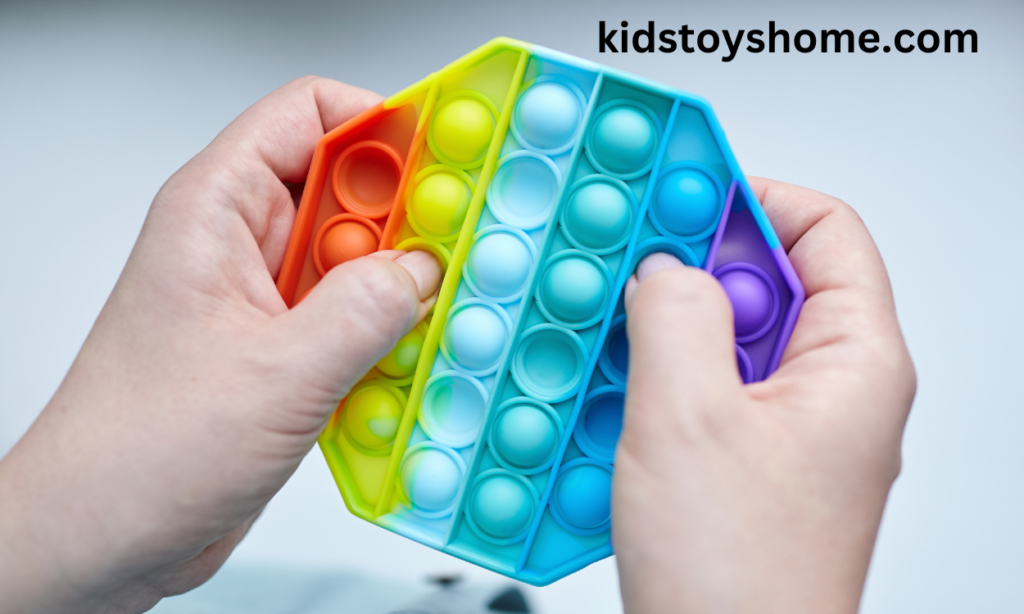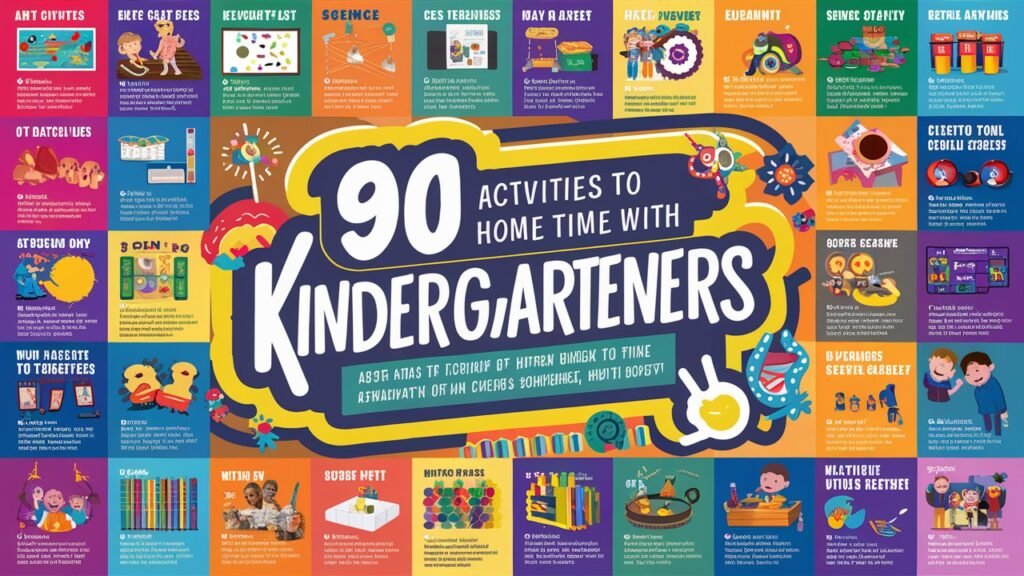Introducing engaging and developmentally appropriate activities for infants can be a challenging task for many parents. The early stages of a child’s life are crucial for brain development, sensory experiences, and motor skills. Without adequate stimulation, infants may miss out on key developmental milestones, leading to potential delays.
One effective solution is to incorporate a variety of structured infant activities into daily routines. These activities can include sensory play, tummy time, and interactive games, all designed to foster physical, cognitive, and emotional growth.
To help you navigate these critical early months, we have compiled a comprehensive guide detailing the best practices and ideas for infant activities. Read on to discover how you can create a stimulating and nurturing environment for your little one.

Importance of Infant Activities for Early Childhood Development
Early childhood development is a critical phase during which infants acquire essential skills that lay the foundation for their future growth and learning. Engaging in infant activities plays a vital role in this developmental stage, as they promote cognitive, motor, language, and social-emotional skills. By participating in various activities, infants can explore their environment, learn new concepts, and build relationships with caregivers and peers.
Active learning, particularly during the first three years of life, has a profound impact on brain development. These formative years are characterized by rapid neural connections, and sensory experiences provided by infant activities stimulate brain plasticity, enhancing their cognitive and motor skills. Thus, ensuring that infants have access to diverse and stimulating activities is crucial for their holistic growth.
To understand the full range of benefits and strategies for implementing effective infant activities, read on for more detailed insights. By delving deeper into this topic, you will gain valuable knowledge on how to support early childhood development comprehensively.

Tummy Time Activities
Tummy time is a crucial component of an infant’s daily routine, fostering the development of essential motor skills and physical strength.
It involves placing babies on their stomachs while they are awake and supervised, helping them build the muscles needed for future milestones like crawling and walking. By integrating tummy time into your infant’s day, you can set a strong foundation for their growth and development.
Read on to discover the various benefits of tummy time for motor skills development and explore a range of engaging tummy time play ideas and activities.

Benefits of Tummy Time for Motor Skills Development
- Strengthens Key Muscles: Tummy time is essential for motor skills development as it helps strengthen the neck, arm, and core muscles. These muscles are crucial for an infant’s ability to roll over, sit up, and eventually crawl.
- Facilitates Rolling Over: During tummy time, infants learn to shift their weight, which is an important skill for rolling over. This practice helps them develop the coordination and strength needed to execute this vital milestone smoothly.
- Aids in Sitting Up: The ability to push up during tummy time engages the core muscles extensively. Strengthening these muscles is vital for infants as they transition to sitting up independently.
- Prepares for Crawling: Tummy time encourages the development of the arm and shoulder muscles. These muscles are fundamental when infants start to crawl, offering them the strength and stability needed.
- Promotes Reaching and Grasping: Placing toys just out of reach during tummy time encourages infants to reach and grasp, which enhances their hand-eye coordination.
- Enhances Floor Play Importance: Floor play is critical during tummy time as it provides a supportive environment for practicing these motor skills. Engaging in various floor play activities further supports muscle development and coordination.
By incorporating tummy time into an infant’s daily routine, parents can significantly contribute to their child’s overall motor skills development, ensuring they are equipped with the strength and coordination needed for future milestones.
Tummy Time Play Ideas and Activities
- Mirror Play: Place a non-breakable mirror in front of the baby during tummy time to engage their interest and encourage neck muscle movement.
- Reaching for Toys: Scatter brightly colored toys just out of baby’s reach to motivate them to stretch, reach, and strengthen their arm muscles.
- Rolling Practice: Gently help the baby roll back and forth from their tummy to their back to enhance their balance and coordination skills.
- Tummy to Sit-Up Transition: Assist your baby from a tummy position into a sitting one. This activity promotes core muscle strengthening and stability.
- Soft Prop Support: Use a rolled-up towel or a small cushion under the baby’s chest to make tummy time more comfortable and support their initial efforts.
- Tracking with Eyes: Slowly move a favorite toy or item side to side in front of the baby, encouraging them to move their head and follow the object with their eyes.
- Overhead Reach: Hold toys above the baby’s head to stimulate upward reaching, which helps in building neck and upper arm strength.
- Interactive Play Mats: Lay the baby on a tummy time mat that has different textures, colors, and toys attached to stimulate sensory exploration and physical movement.
- Parent-Baby Interaction: Lay down face-to-face with your baby or lie opposite them to foster connection while they strengthen their neck and core muscles.
- Ball Activities: Place a medium-sized, soft ball under the baby’s chest and gently rock them back and forth, which helps with balance and building muscle control.
Sensory Experience Activities
Sensory activities play a crucial role in an infant’s early development, providing the foundation for cognitive growth, fine motor skills, and social-emotional interactions.
These experiences engage a baby’s senses of sight, touch, sound, taste, and smell, helping them make sense of the world around them.
Below, we explore the importance of sensory activities for infants and offer simple ideas using household items to stimulate their budding senses.

Importance of sensory activities for infants
- Sensory activities help infants to recognize and react to different sounds, textures, and visual stimuli, which is crucial for improving their cognitive and motor skills.
- Engaging in sensory activities provides essential stimulation that supports developmental milestones in infants, fostering both immediate and long-term growth.
- Through sensory play, infants enhance their recognition abilities, enabling them to better understand their environment and respond appropriately.
- Participating in sensory activities can significantly benefit the bonding process between parent and child, providing shared moments of joy and learning.
- By incorporating various sensory activities into an infant’s routine, parents can create a nurturing environment that promotes holistic development and stronger emotional conne.
Simple Sensory Activities Using Household Items
Introducing sensory activities using household items is a fantastic way to stimulate an infant’s senses and support their development. These activities utilize common, safe household items that offer a variety of colors, textures, shapes, and purposes, making them both accessible and effective for sensory stimulation.
- Colorful Scarf Play: Using brightly colored scarves or cloth pieces, parents can engage infants in a visually stimulating activity. By waving the scarves gently or allowing the infant to grasp and feel them, this activity can enhance visual tracking and tactile exploration.
- Texture Exploration: Gather a collection of safe household items with different textures, such as a soft sponge, a smooth spoon, a fuzzy cloth, and a bumpy basket. Allowing infants to touch and feel these varying textures helps develop their sense of touch and fine motor skills.
- Safe Kitchen Utensils: Utilize safe kitchen items like measuring spoons, plastic cups, or silicone spatulas for sensory activities. Babies can explore the different shapes and sounds these utensils make, contributing to auditory and cognitive stimulation.
- Water Play: Using a shallow dish with a small amount of water, introduce water play as a sensory activity. Adding safe items like plastic toys and cups can enhance the sensory experience, encouraging touch and auditory senses through splashing and pouring.
- Mirror Time: Household mirrors can be used for visual stimulation. Placing a mirror at the infant’s level and allowing them to see their reflection can be fascinating for them, promoting self-awareness and visual exploration.
- Tactile Art: Creating simple tactile art with safe household items like cotton balls, washable paint, or non-toxic glue can be a perfect sensory activity. Infants can feel the different textures of the materials and learn to manipulate objects, encouraging creativity and fine motor skills.
By incorporating these sensory activities using household items into an infant’s routine, parents can create a stimulating and safe environment that supports holistic development and fosters stronger emotional connections.
Social Skills Development
Nurturing social skills in infants is crucial to their early development and sets the foundation for future interactions and relationships. From the first days of life, babies are keen observers of their environment and are highly responsive to social cues.
Fostering these burgeoning social abilities involves engaging in activities that promote interaction, communication, and bonding. By actively encouraging social interactions and incorporating language-rich activities into daily routines, parents can significantly enhance their infant’s social and communicative growth.
Read on to discover effective strategies to encourage social interactions in babies and language-rich activities for infants.

Social Skills Development
In the rapidly evolving world of an infant, social skills development is pivotal for fostering connections and building communicative abilities. During the early months and years, babies are highly receptive to social cues, making it crucial to engage them in nurturing interactions. By encouraging social activities and integrating language-rich experiences into everyday routines, parents can significantly boost their infant’s social and language skills.
Playtime Ideas to Promote Social Skills
Developing social skills in infants requires thoughtful playtime ideas that encourage interaction and communication. Below are some effective strategies:
- Playing Side-by-Side: Allow infants to play next to other babies, even if they are not directly interacting. This parallel play sets the foundation for future collaborative interactions and is a key aspect of early social skills development.
- Engaging in Action-Oriented Activities: Simple games like “So Big!” where a parent or caregiver stretches their arms wide and says, “How big is baby? So big!” can captivate an infant’s attention and encourage them to mimic actions, fostering social and motor skills.
- Sensory Experiences: Create sensory-rich environments using activities that involve different textures, sounds, and visual stimuli. Activities like finger painting, water play, and sand exploration are excellent for promoting observational and interactive skills.
Interacting with teachers and other infants is essential for developing social-emotional skills. These interactions offer valuable opportunities for babies to observe social cues, practice communication, and form connections with others. By integrating action-oriented activities and sensory experiences into playtime, infants can significantly enhance their social development, preparing them for future relational engagements.
Simple and Practical Strategies for Encouraging Social Interactions in Babies
To nurture social interactions in babies, parents can implement these simple and practical strategies:
Responsive Communication
Engage in regular back-and-forth interactions with your baby, such as talking, cooing, and mirroring their sounds and expressions. This encourages early communication and builds a strong foundation for language development.
Reading Together
Make reading a daily routine. Use picture books and storybooks that incorporate bright images and varied textures, and narrate the stories using expressive tones. This enhances vocabulary and promotes cognitive skills.
Group Playdates
Organize playdates with other infants and their caregivers. These social gatherings provide babies with opportunities to observe and mimic other children, fostering social relationships and cooperative play.
Interactive Games
Engage in interactive games like peek-a-boo or pat-a-cake, which involve turn-taking and shared attention. These games are not only fun but also teach important social skills and the concept of reciprocity.
Music and Movement
Participate in music classes or home music sessions where babies can enjoy singing, dancing, and listening to different melodies. Music activities are excellent for social bonding and developing auditory and motor skills.
Encouraging Eye Contact
During feeding, diaper changes, or playtime, maintain eye contact with your baby. Eye contact is a fundamental aspect of social interaction and helps in building emotional connections.
Importance of Social Interaction for Infant Development
Social interaction plays a crucial role in the holistic development of infants. Engaging in social activities from an early age significantly contributes to cognitive, language, and social-emotional skills. Through interactions, babies learn to understand and interpret social cues, such as facial expressions, body language, and vocal tones, which are essential for effective communication.
Cognitive skills are enhanced as infants engage in problem-solving and observational learning during play and social activities. Language development is supported by responsive communication, where babies start to recognize and experiment with sounds, eventually forming words and sentences.
Moreover, social-emotional skills are cultivated through bonding experiences with caregivers and peers, fostering a sense of security and empathy. By prioritizing social interactions, parents can ensure their babies are well-equipped for the complexities of future relationships and environments.
Language Development Activities
Language development in babies is a critical aspect of their overall growth, laying the foundation for cognitive and social skills. Ensuring that infants are exposed to a language-rich environment encourages the development of vocabulary, comprehension, and communication abilities.
By integrating interactive and engaging activities into daily routines, parents and caregivers can significantly boost their baby’s language acquisition.
The following sections will explore the importance of language development in babies and provide practical language-rich activities to support this essential aspect of their early education.

Importance of Language Development in Babies
Language development is essential for babies as it lays the foundation for communication, cognitive growth, and social skills. It enables them to connect with their environment, express their needs, and build relationships from an early age.
Critical Role of Language Skills in Infant Growth Development
One of the critical roles of language development is crucial for the infant’s early growth, which impacts their communication, cognition, and every other sphere of their development. Infants rely on language from day one so that they can understand and get connected to their surroundings. It has laid this foundation that they can show emotions to meet their needs and build up the basis for effective communication in later life.
Cognitive Growth through Early Communication
The stimulation from language heard and learned becomes a stimulus for the cognitive powers of babies. Early interaction the braimakesrk and enhances the ability to solve problems that face them. Language learning, repetition, or imitation also allows infants to develop memory, attention, and reasoning functions central to lifelong learning.
Language: The Key to Social Connection
Language further enhances interactions in a social setting since it helps the baby make sense of the social cues and what others are feeling. Babies use language to make sense of what is happening in the world and around people, whether it is a smile or soft words.
Early Vocalizations Lay the Foundation for Speech
Start from simple sounds to speech. Infants as early as a few months will coo and babble with their vocal cords as they explore sounds. This vocal play will be a precursor to speaking words, as most babies utter their first recognizable words sometime around their first birthday.
Promoting Language Development in an Enriched Environment
The main activities involve reading aloud, singing, and interactive games. Those activities forward vocabulary and help the baby understand how language works. Vast vocabularies support cognitive growth, allowing babies to learn and categorize new ideas and develop critical thinking.
Strong Language Skills Enhance Social Success
As language skills develop, the ability to be a more effective communicator grows along with it. Improved social interactions help make it easier for a child to make friends and communicate clearly and confidently navigate their social environment.
Language-Rich Activities for Infants 0-12 Months
Engaging infants in language-rich activities is crucial for promoting early language development and communication skills. Here are some effective strategies that parents and caregivers can incorporate into their daily routines:
Interactive Storytelling
Reading to babies using interactive storytelling techniques helps capture their attention and stimulates their language development. Use books with bright pictures, varied textures, and interactive elements like flaps and buttons. Narrate the stories with expressive tones and ask questions, even if your baby can’t respond yet. This interactive experience fosters a love for reading and enhances comprehension skills.
Nursery Rhymes
Singing nursery rhymes and playful songs to your baby is a delightful way to introduce them to rhythm, rhyme, and new vocabulary. The repetitive and melodic nature of nursery rhymes helps babies recognize sounds and patterns in language, making it easier for them to remember and eventually mimic words.
Baby Sign Language
Introducing baby sign language can significantly aid in early communication before verbal skills fully develop. Teach simple signs for common words like “milk,” “eat,” “more,” and “all done.” This helps reduce frustration by giving babies tools to express their needs and fosters an early understanding of communication concepts.
Conversational Interactions
Engage in regular conversational interactions with your baby throughout the day. Narrate your actions, describe the environment, and respond to their vocalizations. These responsive interactions provide rich linguistic input, help babies understand the flow of conversation, and encourage them to practice making sounds and, eventually, words.
Parallel Talk
Practice parallel talk by describing what your baby is doing as they do it. For example, say, “You’re picking up the blue ball” or “You’re shaking the rattle.” This technique provides immediate language input related to their actions, enhancing their understanding of words and sentences in real-time contexts.
By incorporating these language-rich activities into daily routines, parents can create a stimulating environment that promotes early language development and robust communication skills in their infants.
Cognitive Development Activities for Infants 0-12 Months
Promoting cognitive development in infants is essential for nurturing their intellectual growth and preparing them for future learning. Here are some engaging activities that parents and caregivers can incorporate into their baby’s daily routine to support cognitive development:

Sorting Games to Enhance Cognitive Skills
Playing with colorful blocks and shapes in sorting games helps engage babies in innovative problem-solving methods. Sorting items based on colors, sizes, and shapes boosts early mathematic skills and enhances cognitive ability in infants.
Stacking Blocks: Developing Hand-Eye Coordination and Concentration
In block-stacking, infants have to balance and think out the plan in their minds, thus improving spatial awareness. This manipulative activity helps develop causality, coordination, and problem-solving and trains hand-eye coordination, among other things.
Mimicry and Imitation for Cognitive Growth
Playing mimicry games with an infant helps build their memory and recognition of social cues, forming part of how they learn new behaviors and language. Overall, it is excellent for improving cognitive ability.
Puzzle play for problem-solving ability.
It is good at cultivating and developing children’s logical thinking. It improves hand-eye coordination, pattern recognition, rational thinking, persistence, and mental flexibility.
Interactive Storytelling for Engaging Cognitive Development
Books with flaps or textures are excellent for keeping the infant’s attention since they support memory and language development. The variety of visual and auditory input creates an extraordinarily enriching multi-sensory learning experience.
Conclusion
Introducing engaging and developmentally appropriate activities for infants can be challenging for many parents.
The early stages of a child’s life are crucial for brain development, sensory experiences, and motor skills. Without adequate stimulation, infants may miss out on key developmental milestones, leading to potential delays. One effective solution is to incorporate various structured infant activities into daily routines.
These activities can include sensory play, tummy time, and interactive games, all designed to foster physical, cognitive, and emotional growth. To help you navigate these critical early months, we have compiled a comprehensive guide detailing the best practices and ideas for infant activities.
FAQs
What activities are good for infants?
- Tummy Time: Encourages motor skills development and strengthens neck, shoulder, and arm muscles.
- Sensory Play: Activities involving different textures, sounds, and visuals to stimulate sensory development.
- Peek-a-Boo: Helps with social development and object permanence understanding.
- Story Time: Reading books to infants aids in language development and auditory skills.
- Reaching and Grasping: Toys that encourage reaching and grasping help with hand-eye coordination.
- Music Play: Exposing infants to music and encouraging them to move to rhythms boosts auditory development.
- Mirror Play: Allows infants to explore their own reflections, enhancing self-awareness.
- Bath Time Play: Playing with water-safe toys in the bath enhances sensory experiences and motor skills.
What are infant activities of daily living?
- Feeding: Includes breastfeeding or bottle feeding, essential for nutrition and bonding.
- Diapering: Regular diaper changes ensure hygiene and comfort.
- Dressing: Changing clothes helps infants adapt to different temperatures and feel secure.
- Bathing: Routine baths keep infants clean and offer a relaxing experience.
- Sleeping: Establishing a sleep routine is crucial for growth and development.
- Cuddling and Comforting: Holding and soothing infants provides emotional security and comfort.
- Interactive Play: Activities like making faces, talking, and gentle tickling foster social bonding and communication skills.
What is baby activity?
Baby activities encompass a range of playful and interactive experiences specially designed to promote the overall development of infants. These activities are vital for stimulating cognitive, physical, emotional, and social growth from early stages. Examples of baby activities include tummy time to strengthen muscles, sensory play for sensory development, and music play to boost auditory skills.
These activities are not only foundational for achieving developmental milestones but also enhance the bond between parent and child through shared experiences and engagement. Through purposeful and enjoyable baby activities, caregivers can provide their infants with the optimal environment for exploration and learning.
How to give a baby massage?
- Create a Calm Environment: Ensure the room is warm and quiet, with soft lighting. Play soothing music if desired.
- Use Gentle Pressure: Apply a small amount of baby-safe massage oil or lotion to your hands and warm it. Use gentle but firm pressure while massaging.
- Start with Legs: Begin with your baby’s legs. Gently roll each leg between your hands, then use your thumbs to stroke from the thigh down to the foot.
- Massage the Arms: Move to the arms, using similar stroking motions from shoulder to hand.
- Soothing Belly Rubs: Use flat hands to massage the baby’s tummy in a clockwise motion, which can aid digestion.
- Chest and Shoulders: Place your hands together in a prayer position on the chest and move them outward in smooth strokes.
- Back Massage: Turn the baby onto their tummy. Use your fingertips in circular motions or long, gentle strokes along the back.
- Facial Massage: Lightly stroke the forehead, cheeks, and chin. Be extra gentle and ensure your baby enjoys it.
- Observe Baby’s Cues: Pay attention to your baby’s reactions. If they seem uncomfortable or restless, stop the massage or adjust your pressure.
- Short Sessions: Keep the massage sessions short, around 5-10 minutes, especially for younger infants.
- End with Cuddling: Finish the massage with some gentle cuddling or rocking to foster a sense of security and bonding.






whoah this blog is excellent i love reading your posts. Keep up the good work! You know, a lot of people are hunting around for this information, you could aid them greatly.